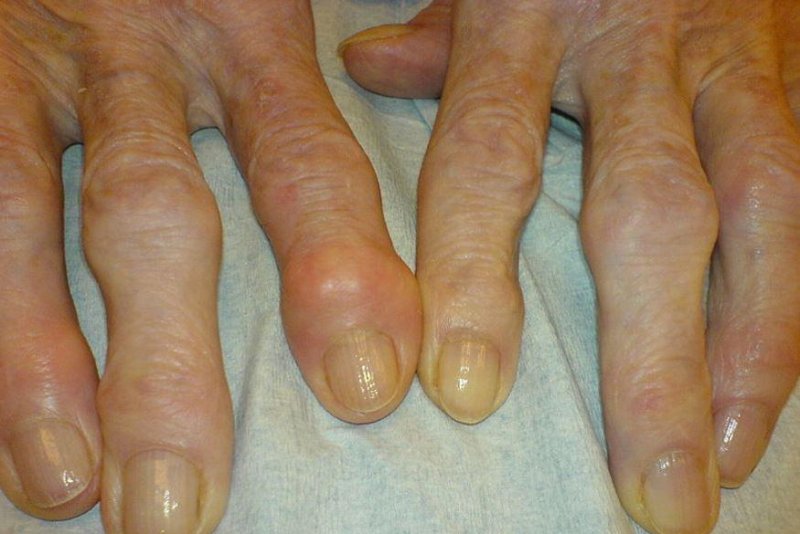Hard knobs at the middle finger joints and at the farthest away finger joint are a common feature of osteoarthritis in the hands. Photo by
Drahreg01/Wikipedia Commons
March 12 (UPI) -- Scientists, using nanotechnology, have measured for the first time a specific molecule that is a biomarker of osteoarthritis and other inflammatory diseases.
Researchers at Wake Forest Baptist Medical Center in North Carolina used a solid-state nanopore sensor to analyze hyaluronic acid in horses, according to findings published Monday in Nature Communications.
"Our results established a new, quantitative method for the assessment of a significant molecular biomarker that bridges a gap in the conventional technology," lead author Dr. Adam R. Hall, an assistant professor of biomedical engineering at Wake Forest School of Medicine, said in a press release. "The sensitivity, speed and small sample requirements of this approach make it attractive as the basis for a powerful analytic tool with distinct advantages over current assessment technologies."
Osteoarthritis, the most common form of arthritis, is a joint disease that results from breakdown of joint cartilage and underlying bone, according to the Centers for Disease Control and Prevention. It's frequently found in the hands, hips and knees, and affects more than 30 million U.S. adults.
Hyaluronic acid, a naturally occurring molecule, plays a role in tissue hydration, inflammation and joint lubrication in the body. In biological fluid, the abundance and size distribution of the molecule is seen as an indicator of inflammation, leading to osteoarthritis and other chronic inflammatory diseases. It also can show how far the disease has progressed.
Other methods for detecting osteoarthritis -- gel electrophoresis, mass spectrometry, size-exclusion chromatography and multi-angle light scattering -- are either slow and less reliable, or expensive and less reliable, researchers say.
In the study, the researchers first employed synthetic hyaluronic acid polymers to validate the measurement approach. As little as 10 nanograms -- one-billionth of a gram -- was extracted from the synovial fluid of a horse model with osteoarthritis.
A microchip with a single hole, or pore, a few nanometers wide -- about 5,000 times smaller than a human hair -- was used. Only individual molecules can pass through the opening and researchers measured their size one-by-one.
Because the molecole's size distribution changes over time in osteoarthritis, this technology could help better assess disease progression, Hall said.
"By using a minimally invasive procedure to extract a tiny amount of fluid -- in this case synovial fluid from the knee -- we may be able to identify the disease or determine how far it has progressed, which is valuable information for doctors in determining appropriate treatments," Hall said.
The researchers want to replicate their study in humans and with other diseases where these molecules and similar ones play a role, including traumatic injuries and cancer.















